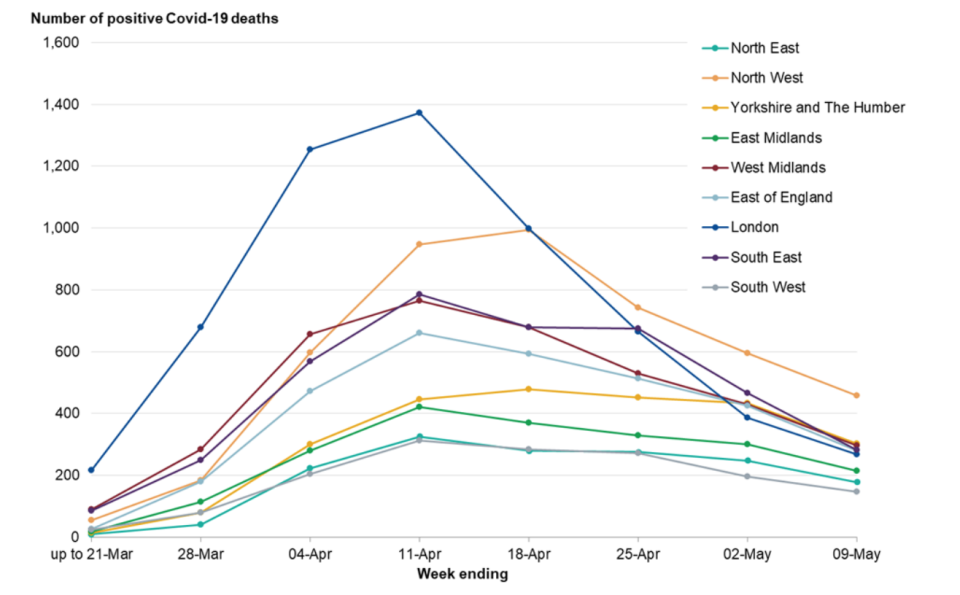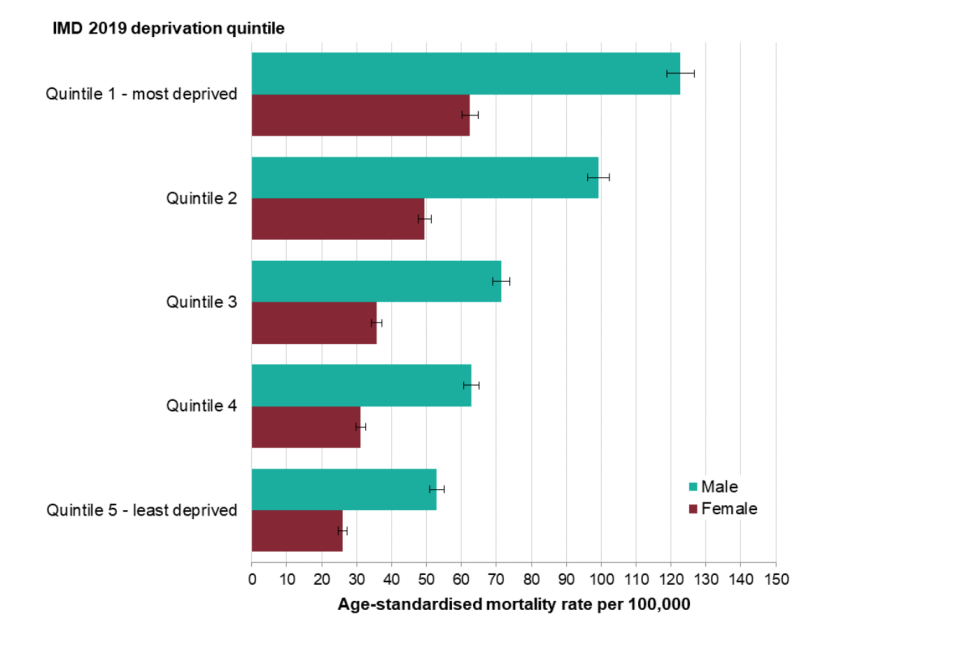The groups of people most likely to die from coronavirus in the UK

A review has found that black, Asian and minority ethnic (BAME) people are at significantly higher risk of dying from coronavirus.
The study, published by Public Health England (PHE) on Tuesday, looked at the risk factors for coronavirus and found BAME individuals have a much higher risk of death than white people.
Those from poorer backgrounds, men and anyone who is obese or suffering from diabetes were also identified as high-risk groups.
The official number of deaths in the UK from coronavirus currently stands at 39,045 after 445 new deaths were added to the total on Monday.
But which specific groups are most at risk?
Age and sex

The report states that men make up almost 60% of deaths from COVID-19 and 70% of admissions to intensive care units.
Among those aged between 40 to 79, mortality rates in men are around twice as high as they are in women.
Those aged 80 or older, when compared with those under 40, were 70 times more likely to die.
Of the 35,425 overall deaths registered in England between 21 March and 8 May 2020, men accounted for 57% and females 43%.
The PHE study said it is “not yet fully clear what drives the differences in outcomes between males and females”.
However, it suggested behavioural and occupational factors may have a part to play, as well as biological differences.
Geography

The study found that London had the highest death rates, followed by the North West, the North East and the West Midlands.
The South West had the lowest death rates, with people in London being more than three times more likely to die of coronavirus than in the West Country.
Survival rates among those diagnosed with the virus also show those living outside of London had a slightly lower risk of death, except for in the East Midlands and the East of England where the risk was similar.
Regional differences in COVID-19 death rates are greater than those seen previously for normal years and the geographic gradient is different.
Deprivation

Britons living in the country’s most deprived areas are more than twice as likely to die from coronavirus compared to those in wealthy regions.
Both males and females in impoverished places had higher mortality rates.
Survival rates among those of working age who were diagnosed with coronavirus showed the risk of death was almost double the least deprived areas.
The study also found that people in deprived areas are also far more likely to be diagnosed with coronavirus.
Ethnicity

The PHE report showed that, after accounting for the effect of sex, age, deprivation and region, people of Bangladeshi ethnicity have around twice the risk of death than people who are white British.
Those of Chinese, Indian, Pakistani, Other Asian, Caribbean and Other Black ethnicity have between a 10% and 50% higher risk of death when compared to white British.
Black ethnic groups had the highest diagnosis rates per 100,000 population, 486 in females and 649 in males.
The lowest diagnosis rates were in people from White ethnic groups where only 220 females and 224 males per 100,000 contracted coronavirus.
Black males were also found to be 4.2 times more likely to die from a COVID-19-related death than White males.
A higher prevalence of underlying health conditions in people from Bangladeshi and Pakistani, Black Caribbean and Black African backgrounds may also have contributed to the higher death rate.
Coronavirus: what happened today
Read more about COVID-19
How to get a coronavirus test if you have symptoms
How easing of lockdown rules affects you
In pictures: How UK school classrooms could look in new normal
How public transport could look after lockdown
How our public spaces will change in the future
Help and advice
Read the full list of official FAQs here
10 tips from the NHS to help deal with anxiety
What to do if you think you have symptoms
How to get help if you've been furloughed

 Yahoo News
Yahoo News 
